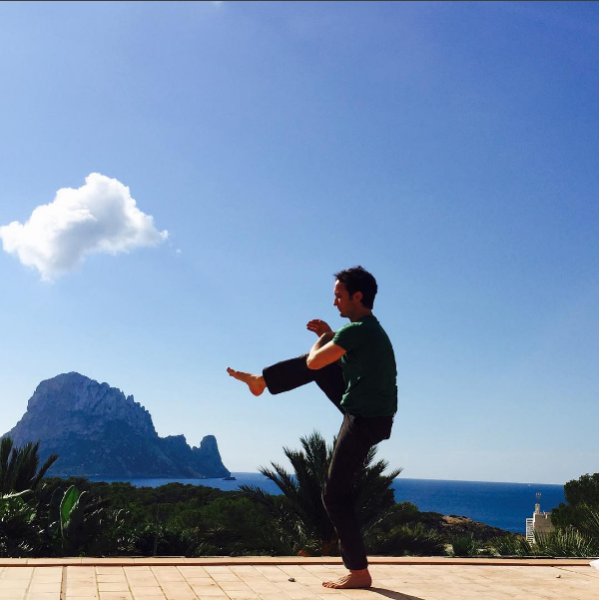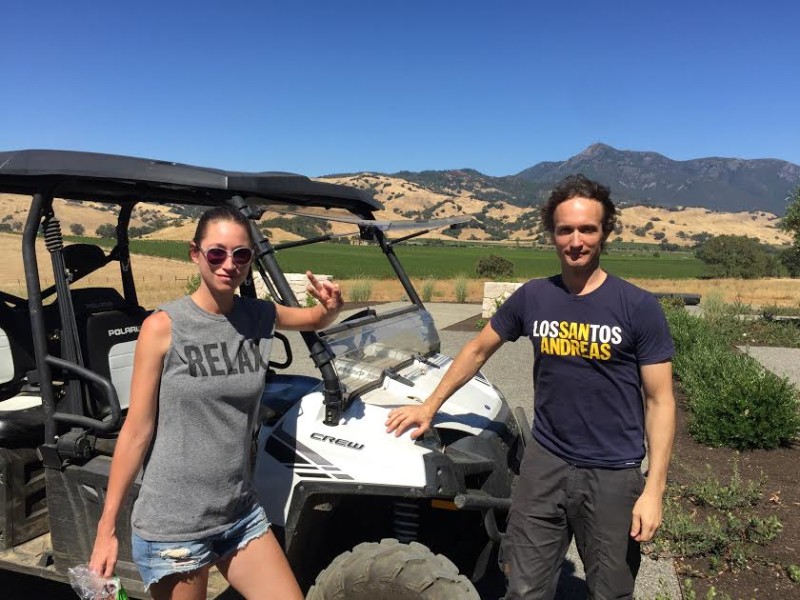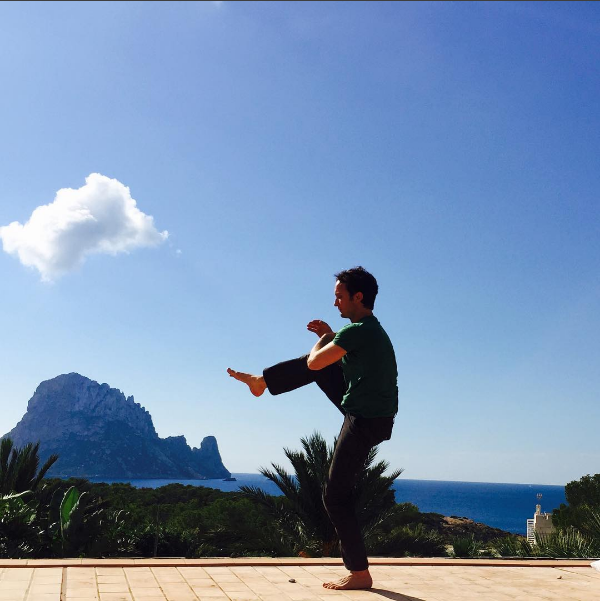When your knees hurt, pay attention. When anything hurts, pay attention.
Sometimes self care means backing off and taking it easy. It’s knowing when to forget about the goals, for just a moment. And sometimes self care is driving to achieve with everything we’ve got. Because finding our dreams is why we rest.
Finding our dreams is why we rest.
When you find something that hurts, you have a big chance here. As a start, it’s a chance to learn how to move in your life in a way that doesn’t hurt you. It’s a chance to learn how to heal when healing is needed. And it’s a chance to learn how to accomplish everything you want to accomplish, in a way that feels good in your own body. Which happens to be the best way there is, to do everything there is.
Part of self care involves taking it easy. Rest when rest is needed. We’ll talk about knees to get started here.
Your knee is amazing. It’s an incredible piece of engineering, structured as a “pivotal hinge joint.” This means it not only swings back and forth, but also has a slight rotational capacity, allowing us to navigate easily over uneven ground. It also has a highly-advanced system of lubricating fluid and cushioning sacs to keep things protected and moving easily. What’s extra-special about this protective fluid is it’s not dumb. Land hard from a jump and it instantly becomes more viscous to absorb shock. Lighten your load and viscosity immediately lessens to support easy movement.
Of course, complicated engineering can be vulnerable. If you play sports, carry heavy loads, or just live your life for a bit, you’ve probably noticed that knees don’t always feel great. They can also take quite a long time to heal, so when your knee sends you signals, it’s important to listen. The number one way to prevent injury: if something hurts your knee, don’t do it. Find another way.
You always have a way to do what you need to do
in your body, in a manner that doesn’t injure,
and just feels great.
There’s so much you can do that doesn’t involve testing or straining your knees, including from sitting and lying down. And from standing, it’s also of course possible with practice to change your body position – in particular, the length and width of your stance – so your knees are no longer over-challenged.
Knee pain is often a long-term chronic problem, and relates to how you move throughout your whole life. So it’s not always a yoga puzzle, and probably not great to over-diagnose how you’re doing yoga as the cause of difficulty here. At the same time, with the right approach and practice, yoga can become a cure. And from this perspective, we have a challenge for knees that might have something to do with yoga poses.
There are many frequent causes for knee difficulty. Three of them come up pretty often in yoga, and these same principles apply for tai chi practice, and across pretty much everything we do.
1) Body position. We’re often taught to make our positions very long, narrow, and awkward. This puts a great deal of strain on our knees. We then carry this strain into movement, which leads to aggravation and injury over time.
2) Using force against resistance in our own bodies. We might also be taught to push into hip openers like ankle to knee and pigeon, which over time destabilizes our knees, and makes them more vulnerable to injuries.
3) Moving with excess tension. We’re taught in yoga to carry a great deal of tension throughout our whole body, and then move with this tension. This comes in part from an idea in yoga about practicing suffering to transcend suffering. And part comes from yoga lacking a history of movement wisdom, unlike the art forms originating further East. This moving with excess tension inhibits everything we do, and keeps us working much harder than we need to accomplish much less than we can.
All of these combined lead to injury, even when the visual of “correct” alignment is maintained – because in all of these causes, our body is out of harmony with itself, and we’ve blocked our ability to move safely and naturally.
So you might experience pain directly in one transition – for example, a deep squat rolling forward into crow – and for now, this means don’t do this in the way you’re doing it. But it also means that this particular movement isn’t your cause. The cause is likely much broader, more related to how you move in general. This is why targeted cures – just changing one pose or another – could give some temporary result, but aren’t likely to work for very long. Our bodies typically need a more holistic approach.
And for a more immediate start, hot water bottles. Get two of them, and practice a technique called “surround the dragon.” This means rather than attacking an injury directly – by poking and prodding and manipulating an injured area head-on – surround the effected area with warmth, from your ankle and calf, up through your knee, and into you thigh and hip. Do this on both sides, each day.
Also, keep taking it easy. If there are movements that hurt, don’t do them.
There are so many ways of moving
that have nothing to do with pushing for poses,
and everything to do with responding
to messages your body sends you.
Your body is talking to you all the time. You just need to listen, and respond. So change your movements. Of course this is better in person, so we can practice directly together. But here are a few things to try.
Don’t ask a deeply-compressed knee to hold all of your weight as you move. Support your weight with your hands, and drop an opposite knee down to the ground, so there’s not so much on the knees. For a while, don’t deeply bend your knees, unless there’s really not much weight on them at all – for example, while you’re on your back. And change your stances. Make them more stable, and less strained. This way when you move, it doesn’t require so much strain throughout your body to move. You’ll be less aggravated, less open to pain and injury, and able to do much more with much less.
When you learn to care for yourself in this way, you’ve learned to care for yourself in every way.
Slow down enough to hear your body.
Believe what you hear is worth your response. Respond to what you hear in how you move.
This will help your knees. It will also help everything in you, and everyone around you.
– Mike
About Strala Yoga Training
Strala combines the movement and healing wisdom of tai chi with the form vocabularies of yoga, tai chi, qigong, and Traditional Chinese and Japanese Medicine, to help people release stress, move easily through challenge, and live radiantly inspiring lives.
It begins with a mindset, that says our best way to get where we’re going is to feel good along the way. It also works miracles for whole health, helping us to find ease in our bodies and minds, and create the right conditions both for healing and optimal performance.
In our Strala Yoga Training Courses, you learn to shape your destiny on every level that counts, from your psychology, chemistry and neurology, to your chromosomes and even gene expression. The unique set of skills you develop – for connecting with yourself and others, unblocking your energy, healing what needs healing and accomplishing challenge with ease – uncovers your ability to create the life you want, and be an inspiring leader to the people around you.
Who’s What’s and When’s of Strala Yoga Training



